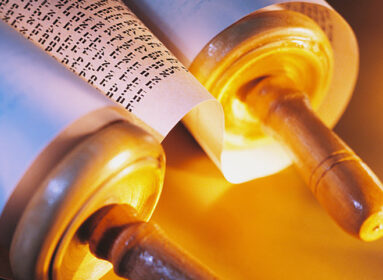
By Rabbi Tzvi Hersh Weinreb
A
t this time of year, just before the joyous holiday of Purim, we become keenly aware of the role of the uniforms of royalty. The book of Esther reaches its happy climax when “Mordecai left the king’s presence in royal robes of blue and white, with a magnificent crown of gold and a mantle of fine linen and purple wool” (Esther 8:15). This new attire mirrored the dramatic change in Mordecai’s position in the Persian Empire: “…All the officials of the provinces…showed deference to the Jews, because the fear of Mordecai had fallen upon them. For Mordecai was now powerful in the royal palace, and his fame was spreading through all the provinces…” (Esther 9:3-4).
In this week’s Torah portion, Tezaveh (Exodus 27:20-30:10), we learn about another leader whose prescribed garb conveyed his special position. That is, the special clothing worn in the Tabernacle service by the priests, the kohanim, the sons of Aaron. Of special interest are the unique components of Aaron’s own uniform. Aaron was the High Priest, the Kohen Gadol, the ancestor and the archetype for all future generations of High Priests. A special set of eight garments was designated for his exclusive use. Perhaps the most important of these was the Choshen Mishpat, commonly translated as “the breastplate of judgment” or “the breast piece of decision.” The details of this sacred item include the following instruction: “Aaron shall carry the names of the Children of Israel on the breastplate of judgment over his heart when he enters the Sanctuary for remembrance before the Lord at all times” (Exodus 28:29).
The Hasidic master Rabbi Levi Yitzchak of Berditchev asks, “Why the names of the twelve tribes? Don’t we commonly mention only the names of the three Patriarchs when we beseech the Almighty for His remembrance?”
He responds: “When one individual is selected from a group for a position of importance we are inclined to conclude that that one individual is chosen, and all the others are rejected. … Here too, we might erroneously presume that Aaron was the Almighty’s favorite, and the rest of Israel somehow inferior to him. Therefore, the names of all the tribes of Israel were engraved upon the breastplate, indicating that all of Israel was equally beloved by the Almighty” (Kedushat Levi, Exodus 28:29). In other words, Aaron’s special clothing was designed to convince him and everyone else that he was in no way superior to those whom he represented. Quite the contrary; all of the Children of Israel are equally favored by the Almighty is the central message of the Choshen Mishpat.
Though there is no longer a High Priest, there is a trace of the lesson of the sacred breastplate that when one examines the phylacteries, or tefilin, which Jewish men don most mornings of the year. The undersurface of the leather phylacteries has twelve stitches holding the various compartments in place. These twelve stitches symbolize the twelve tribes of Israel. (See Mishneh Berurah, 32:51/228.) The person who wears tefilin in our day must avoid considering himself superior to the rest of Israel.
The lesson here is that a true leader acts as the leader of all of his constituents and not merely as the leader of those who share his beliefs and convictions.
That Mordecai was such a true leader can be supported by a homiletic analysis of the very final verse of the book of Esther. It reads: “For Mordecai…was highly regarded by his many brethren; he sought the good of his people and interceded for the welfare of all his kindred.”
Rashi presents an alternative translation to the phrase, “he was highly regarded by his many brethren” so that it reads, “he was highly regarded by most of his brethren” – that is, most but not all of his brethren. A contingent of Mordecai’s colleagues objected to Mordecai’s involvement in public affairs, which resulted in his diminished involvement in religious matters.
Many wonder why the book of Esther would end with a critical remark against the heroic Mordecai. However, the Hasidic sage Rabbi Shalom Yosef of Shpikov explains that the entire verse is a salute to Mordecai’s great leadership. Yes, Mordecai had his opponents. But nevertheless, “he sought the good of his people,” even those who disagreed with him. And, “he interceded for the welfare of all his kindred” – even those who were his fiercest critics.
Understanding the final words of the Purim story in this manner allows us to see Mordecai as a heroic leader from start to finish. The Megilah begins with an account of Mordecai’s bravery and courage and concern for Esther. It ends with the portrait of a leader who seeks the well-being of all of his people, even of those who are disappointed in him.
Purim is an opportune moment for us all to pray that our contemporary leaders, at every level and of every nation, learn to emulate Mordecai’s example.







 Southern New England Jewish Ledger
Southern New England Jewish Ledger














